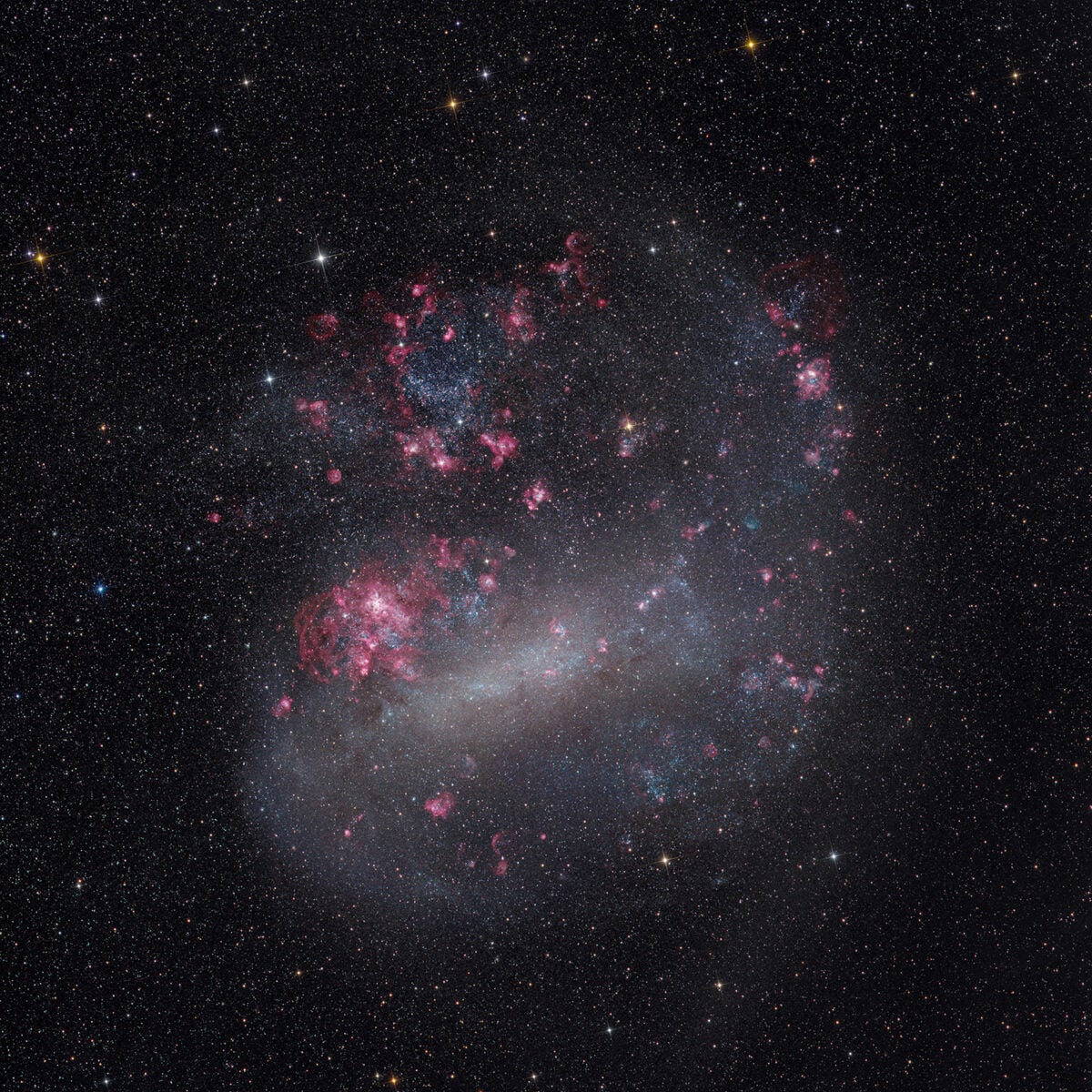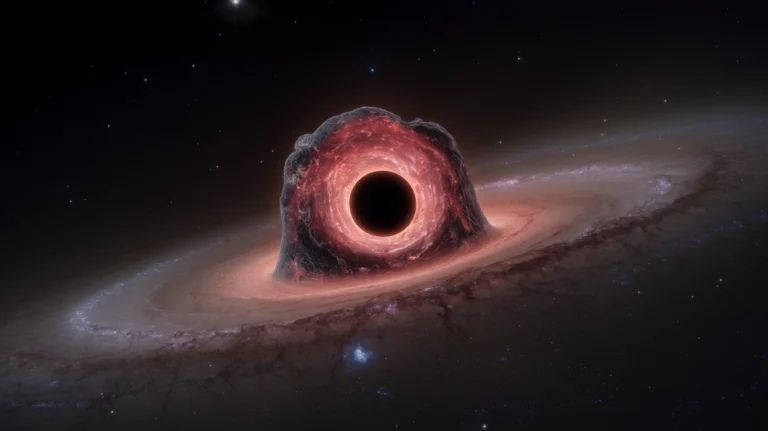Monster Black Hole Discovered in Milky Way’s Neighbor
A Galactic Surprise: The Large Magellanic Cloud’s Hidden Giant
Did you know that a galaxy just 160,000 light-years away might harbor a supermassive black hole? The Large Magellanic Cloud (LMC), a satellite galaxy of the Milky Way, has long been considered too small to host such a colossal entity. However, recent research suggests otherwise.
Astronomers have uncovered compelling evidence pointing to a black hole approximately 600,000 times the mass of our Sun residing at the center of the LMC. This discovery not only challenges previous assumptions about dwarf galaxies but also offers new insights into galactic evolution.

Tracing the Origins: Hypervelocity Stars as Cosmic Clues
The Role of Hypervelocity Stars
Hypervelocity stars (HVSs) are stars moving at speeds so high that they can escape their home galaxies. Traditionally, these stars were thought to originate from interactions with the Milky Way’s central black hole, Sagittarius A*. However, new data from the European Space Agency’s Gaia mission has revealed that some of these stars trace back to the LMC. arXiv+4arXiv+4Phys.org+4
The Hills Mechanism
The primary mechanism believed to eject these stars at such velocities is known as the Hills mechanism. This occurs when a binary star system ventures too close to a supermassive black hole. The intense gravitational forces can capture one star while flinging the other away at incredible speeds. arXiv+3arXiv+3arXiv+3Phys.org+2Space+2WIRED+2WIRED
Unveiling the Hidden Black Hole
Gaia’s Revelations
The Gaia spacecraft has been instrumental in mapping the positions and motions of over a billion stars. By analyzing the trajectories of certain hypervelocity stars, researchers found that their paths converge not towards the Milky Way’s center but towards the LMC. This unexpected finding suggests the presence of a massive gravitational source within the LMC. ReutersCalifornia Institute of Technology
Estimating the Black Hole’s Mass
Based on the velocities and distribution of these stars, scientists estimate the mass of the LMC’s central black hole to be around 600,000 solar masses. This aligns with predictions from the M-sigma relation, which correlates the mass of a galaxy’s central black hole with the velocity dispersion of its stars. arXiv
Implications for Galactic Evolution
Challenging Previous Assumptions
The discovery of a supermassive black hole in the LMC challenges the long-held belief that such massive black holes only exist in large galaxies. It suggests that even dwarf galaxies can host these cosmic giants, prompting a reevaluation of galactic formation and evolution theories.
Future Observations and Research
With this newfound knowledge, astronomers are keen to explore other dwarf galaxies for similar hidden black holes. Upcoming data releases from Gaia and observations from other telescopes will be crucial in this endeavor. WIRED+2arXiv+2arXiv+2
FAQs
Q: What is the Large Magellanic Cloud (LMC)?
A: The LMC is a satellite galaxy of the Milky Way, located approximately 160,000 light-years away. It’s one of the closest galaxies to our own and is visible from the Southern Hemisphere.
Q: How do Hypervelocity stars indicate the presence of a black hole?
A: Hypervelocity stars can be ejected from galaxies through interactions with supermassive black holes. By tracing their trajectories back to their origin, astronomers can infer the presence of such black holes.Reuters
Q: What is the significance of the Hills mechanism?
A: The Hills mechanism explains how binary star systems interacting with a supermassive black hole can result in one-star being captured, and the other ejected at high speeds, becoming a hypervelocity star.Space+4WIRED+4arXiv+4
Q: Why is the discovery of a black hole in the LMC important?
A: It challenges existing theories that only large galaxies can host supermassive black holes, suggesting that these entities might be more common than previously thought.
Q: What are the next steps for researchers?
A: Astronomers plan to use future data from missions like Gaia and observations from other telescopes to search for similar black holes in other dwarf galaxies.Phys.org+5WIRED+5California Institute of Technology+5
Join the Cosmic Conversation
The universe is full of surprises, and discoveries like the supermassive black hole in the LMC remind us of how much there is still to learn. What are your thoughts on this discovery? Share your insights and questions in the comments below!
Read our previous article: Chasing the 2024 Solar Eclipse in New Brunswick:
